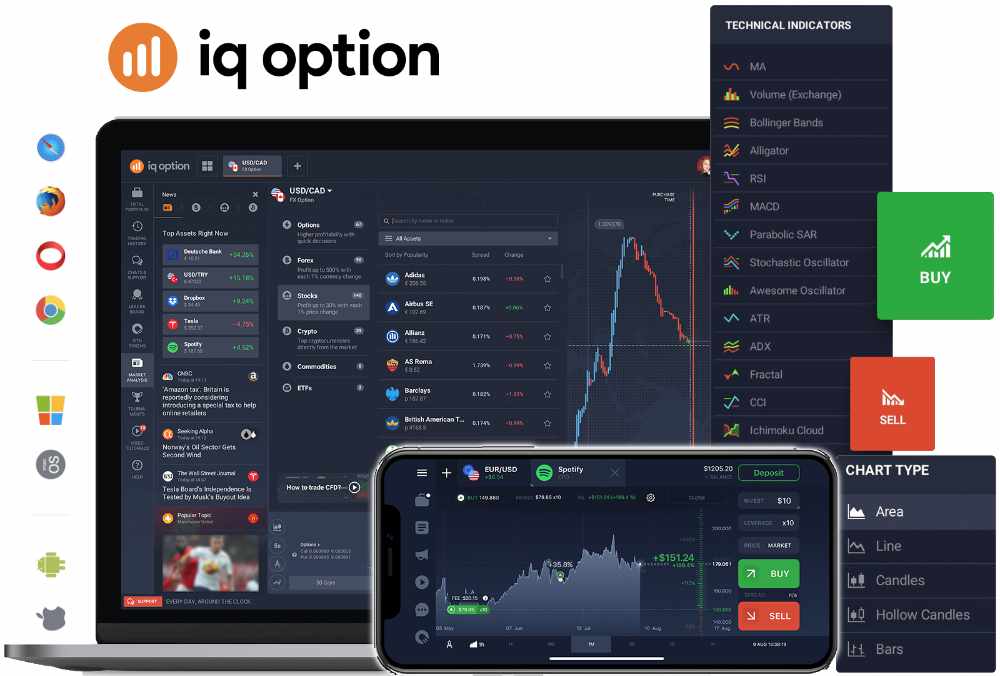Stochastic Indicator: Simple Strategy for Forex & Stock Daytrading
The world of day trading is fast-paced and can be overwhelming for both beginners and experienced traders. Among the myriad of technical analysis tools available, the Stochastic Oscillator stands out as a powerful indicator that can help traders make informed decisions. This article delves into the Stochastic Indicator, explaining its functionality, and providing a simple strategy for traders in the Forex and stock markets.
Understanding the Stochastic Indicator
The Stochastic Oscillator is a momentum indicator that compares a particular closing price of an asset to a range of its prices over a certain period of time. The sensitivity of the oscillator to market movements is reducible by adjusting that time period or by taking a moving average of the result.
It is typically used to generate overbought and oversold trading signals, utilizing a 0-100 bounded range of values. Traditionally, readings over 80 are considered overbought, while readings under 20 are considered oversold. The Stochastic Indicator consists of two lines: the %K, which measures the current market price against the range, and the %D, which is a moving average of the %K.
Components of the Stochastic Oscillator
- %K Line: The main line that indicates the current market momentum.
- %D Line: A moving average of the %K line, which signals potential trend reversals.
Setting Up the Stochastic Indicator
To set up the Stochastic Oscillator in a trading chart, traders need to decide on three main parameters:
- The period for %K, which is typically set to 14 periods.
- The smoothing period for %K, often set to 3.
- The %D moving average period, also commonly set to 3.
These settings can be adjusted based on the trader’s strategy and the volatility of the market being traded.
Stochastic Indicator Strategy for Daytrading
Daytrading with the Stochastic Indicator involves looking for specific patterns and signals that suggest an entry or exit point. Here’s a simple strategy to get started:
Identifying Overbought and Oversold Conditions
When the Stochastic lines are above 80, the market is considered overbought, and when they are below 20, it is considered oversold. Traders look for these conditions as potential signals for a reversal.
Stochastic Crossover
A bullish signal is generated when the %K line crosses above the %D line in the oversold area. Conversely, a bearish signal is when the %K line crosses below the %D line in the overbought area.
Divergence
Divergence occurs when the price of an asset is moving in the opposite direction of the Stochastic lines. A bullish divergence is when the price makes a new low, but the Stochastic makes a higher low. This can indicate a potential upward reversal. A bearish divergence is the opposite, suggesting a potential downward reversal.
Applying the Strategy in Forex Trading
In the Forex market, currency pairs are often subject to rapid price movements. The Stochastic Indicator can help traders identify the best times to enter or exit a trade based on momentum shifts. Here’s how to apply the strategy:
- Wait for the Stochastic lines to enter overbought or oversold territory.
- Look for a crossover in the appropriate direction.
- Confirm the signal with divergence or another technical analysis tool.
- Set stop-loss orders to manage risk effectively.
Applying the Strategy in Stock Trading
Stock traders can also benefit from the Stochastic Indicator by tailoring the strategy to the equity market:
- Monitor stocks with high volume and volatility for clearer signals.
- Use the Stochastic Indicator in conjunction with trend analysis.
- Consider the overall market sentiment and news that may affect stock prices.
- Implement risk management strategies to protect against sudden market moves.
Limitations of the Stochastic Indicator
While the Stochastic Oscillator is a valuable tool, it is not without its limitations. False signals can occur, especially in volatile markets where price swings can lead the indicator to produce overbought or oversold signals too frequently. It is also important to note that the Stochastic Indicator does not account for price gaps or sudden, sharp price movements that can occur due to news events or market announcements.
Combining the Stochastic Indicator with Other Tools
To mitigate some of the limitations and enhance the effectiveness of the Stochastic Indicator, traders often combine it with other technical analysis tools such as:
- Moving Averages
- Relative Strength Index (RSI)
- MACD (Moving Average Convergence Divergence)
- Support and Resistance levels
Using a combination of indicators can help confirm signals and increase the probability of successful trades.
Conclusion: Key Takeaways for Stochastic Daytrading
The Stochastic Indicator is a versatile tool that can aid traders in identifying potential entry and exit points based on market momentum. By understanding how to interpret its signals and combining it with other technical analysis methods, traders can develop a robust daytrading strategy for the Forex and stock markets. However, it is crucial to be aware of its limitations and to always use risk management practices to protect against market volatility.
In summary, the key takeaways for using the Stochastic Indicator in daytrading are:
- Recognize overbought and oversold conditions as potential reversal signals.
- Look for crossovers and divergence for trade entry and exit points.
- Combine the Stochastic Indicator with other technical analysis tools for confirmation.
- Always implement risk management strategies to safeguard your trades.
By adhering to these principles, traders can leverage the Stochastic Indicator to enhance their daytrading performance in both the Forex and stock markets.





 How to trade FX options? (01:44)
How to trade FX options? (01:44) How to trade CFD? (00:49)
How to trade CFD? (00:49) How to trade binary options*? (01:22)
How to trade binary options*? (01:22) Forex. How to start? (01:01)
Forex. How to start? (01:01)